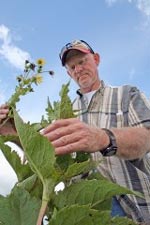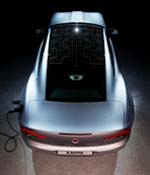
An environmental journalist makes a UNEP-sponsored field visit to Mariakani to see first hand how scarce fresh water is and how that affects the people of the village.
The research grants will support studies on allergy risks, wildfires and public health, and vehicle technologies.
More than 15 companies received between $46,000 and $70,000 from EPA to apply toward innovative technologies.
In model years 2012-2016, automakers will be expected to improve fleet-wide fuel economy and reduce fleet-wide GHG emissions on passenger cars and light trucks by approximately 5 percent every year.
Three small communities will use a $500,000 grant in the "Sustainable Energy Efficiency Demonstration," which could include retrofits, updates to local codes and policies, and using more energy efficient vehicles in municipal fleets.
The U.S. Environmental Protection Agency reiterated that stationary sources will not have to comply with greenhouse gas requirements until 2011.
The reuse of horse manure to generate electricity is expected to substantially offset electric charges incurred.
Dairy cow manure is broken down to create methane biogas, which is burned to produce electricity and sent to the power grid.
The American Water Works Association will present information on "Water Resource Strategies for Climate Change and Shortages" and "Disinfection Byproducts: Recent Research Raises Concerns."
Selectively burning underbrush and small trees can lower the chances of high severity wildfires that affect large trees and release more carbon dioxide, according to Christine Wiedinmyer with the National Center for Atmospheric Research.
The American Clean Skies Foundation said natural gas is an important energy resource that will help control smog levels.
City department will use new program to measure and report greenhouse gas emissions.
2009 WasteWise and NPEP partners reported they eliminated or recycled 11 million tons of material.

South Dakota State University is trying to determine if the cup plant can be grown on land unfit for crops.
EPA is proposing that more industrial sectors should report their greenhouse gas emissions in 2012.
Governor Ritter and lawmakers expect broad-based state plans will take care of regional haze and potentially unpopular federal mandates.

In a Q&A with EPonline, CleanTech OC's Executive Director, Michael Levin, assesses the burgeoning industry in California.
- By Mike Levin, Bryan Cave LLP
Respondents say energy savings is the No. 1 reason for green building.